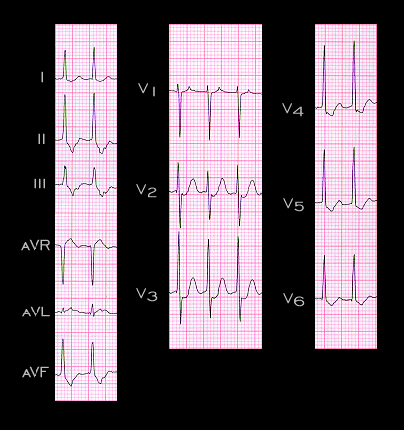
As demonstrated on pages 7.2.44 and 7.2.46, ST segment depression may occur during AV re-entrant tachycardias, even in patients with no history or other evidence of heart disease. It was suggested that this was due to the superimposition of the retrograde P waves on the ST segment rather than to ischemia. The ECGs shown here and on the next page are another example of this phenomenon. They are from a 32 year old female with a history of palpitations but no other cardiac history. Note the retrograde P waves that are located within the ST segment and seen best in leads II, III and aVF, as well as the ST segment depression that is most prominent in leads V4, V5 and V6.
